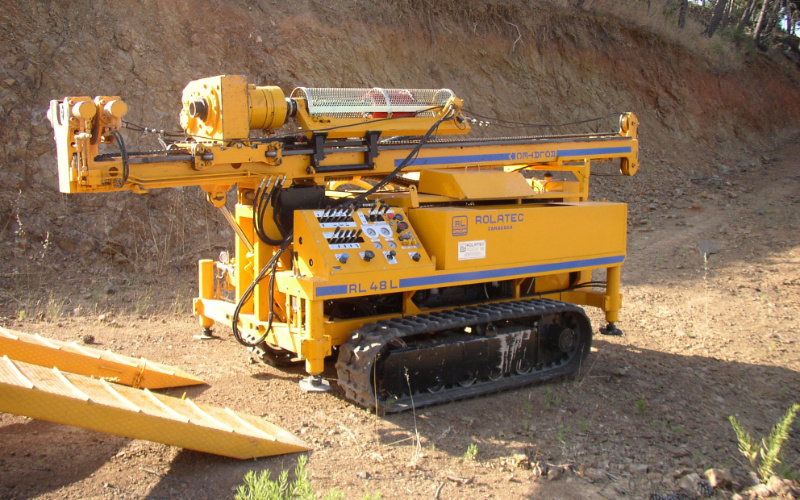The in situ or field trials to measure the strength and / or deformation of the land and collect soil samples for analysis. Through these techniques the specialist can know with great precision the medium on which it will carry out the project. Recognition includes a physical description of the subject matter: visual aspect, color, structure, texture, water table, stratification, inclination, layer thickness, etc. These information can be completed with laboratory tests.
Ver más
The most common field trials are:
- Mechanical borings to rotation
The mechanical borings are perforations diameter and depth variables for recognizing the nature of the subsoil, extracting undisturbed samples and conduct on-site testing at different depths. There are several types of surveys but the fittest geotechnical are rotation with widia and diamond crowns, allowing you to recover a high percentage of material with minimal alteration. The method is based on a rotating cutting crown having a central bore, which is located on the battery, which is a gap of between 1.5 to 3 m tube. length where the witness sample is housed. While it can be expensive, geotechnical surveys encompass rotary techniques that provide information more completely.
- Penetration tests
To measure the penetration resistance through a tip inserted in the field, either by pushing or by beating. The dynamic penetrometer (DPSH, Borros, DPL, etc.) work by hitting. The static penetrometer works by push, being less common than dynamic.
- Calicatas
Using a backhoe machine opens a trench some depth (generally <4 m.), Which allows direct observation to know the disposition of the upper lithology and thickness of vegetation cover. While performing the same can be taken various soil samples (and water) at different depths, depending on the variability and importance thereof.
- Charging plate for foundations
This technique stepwise load plate while the seats in the same measured relative to a reference plane remains stationary. In this way you can determine the characteristics of deformation or even resistance on the ground next to the plate materials. It is very useful when homogeneous materials are analyzed in depth and to define the pseudo-elastic soil behavior.
- Pressuremeter test
This test consists of radially dilating the field with the objective of gathering information on the deformability (pressuremeter modulus) and resistance (limit pressure). After performing a pre-perforation, pressuremeter field probe is inserted and the relationship between the pressure applied on the ground and displacement of the wall of the probe is determined.
Count on Geosand if you need the services of a specialized field tests and geotechnical studies in Malaga, Cadiz, Seville, Cordoba, Almeria, Jaen, Huelva and Granada company.
Ver menos


